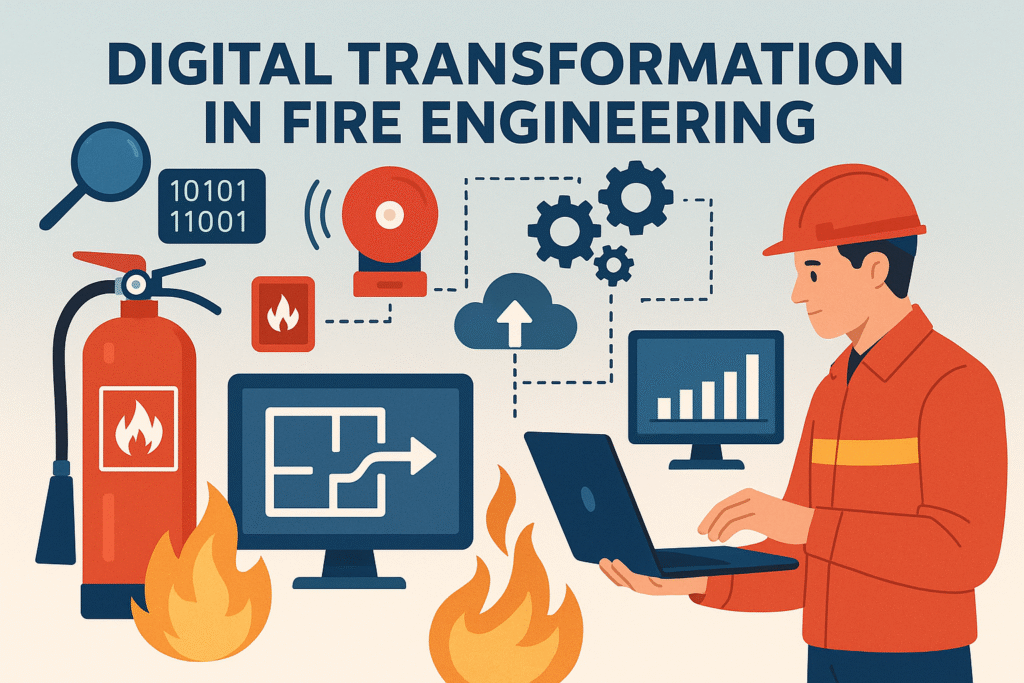The world of fire engineering is evolving — and at the heart of this change is digital transformation. As buildings grow taller, designs get more complex, and regulations become stricter, traditional methods alone are no longer enough. Digital technologies are making fire engineering smarter, faster, and ultimately safer. For developers, building owners, and safety professionals, embracing this shift is not just an option — it’s the way forward.
So, what does digital transformation mean in fire engineering? It’s the integration of advanced tools like Building Information Modeling (BIM), Computational Fluid Dynamics (CFD) simulations, digital fire modeling, and data analytics into every phase of fire safety design and assessment. These technologies bring precision, efficiency, and a higher level of insight that simply isn’t possible with manual or paper-based approaches.

Take BIM, for example. Fire engineers can now collaborate in real time with architects, structural engineers, and MEP teams on a single, coordinated digital model. This eliminates clashes, reduces errors, and ensures fire safety features — like sprinklers, smoke vents, and fire-rated walls — are accurately integrated into the design from day one. The result? Fewer costly changes during construction and smoother approvals from authorities.
Fire and smoke modeling is another game changer. By using CFD simulations, engineers can predict how smoke and heat will move through a building during a fire. This allows for the design of optimized evacuation routes, smarter placement of smoke control systems, and performance-based solutions that meet safety goals while allowing for more flexible architecture.
Digital transformation also extends to inspection, testing, and maintenance. Mobile apps and cloud platforms now enable real-time tracking of fire safety audits, testing schedules, and system performance data. Facility managers can receive instant alerts, monitor compliance, and make data-driven decisions that improve safety and reduce risks.
At Burkan Engineering, we are embracing this digital revolution to deliver faster project turnarounds, more accurate designs, and safer outcomes for our clients. By combining our deep expertise with cutting-edge tools, we help clients move beyond compliance and achieve smarter fire safety solutions. Whether it’s a high-rise tower, an industrial facility, or a green building, digital technologies allow us to tailor solutions that are precise, efficient, and future-ready.
The benefits go beyond just safety — digital fire engineering also supports sustainability goals by optimizing material use, improving energy efficiency in smoke control systems, and reducing waste during construction. It’s a win-win for safety, performance, and environmental responsibility.
As the industry continues to evolve, those who adopt digital transformation will be better positioned to meet rising safety standards, navigate complex regulations, and deliver value to their clients. Fire engineering is no longer just about protecting against risk — it’s about enabling safer, smarter, and more sustainable spaces.
Ready to take your project to the next level with digital fire engineering? Let’s talk. Together, we can build a safer future.
